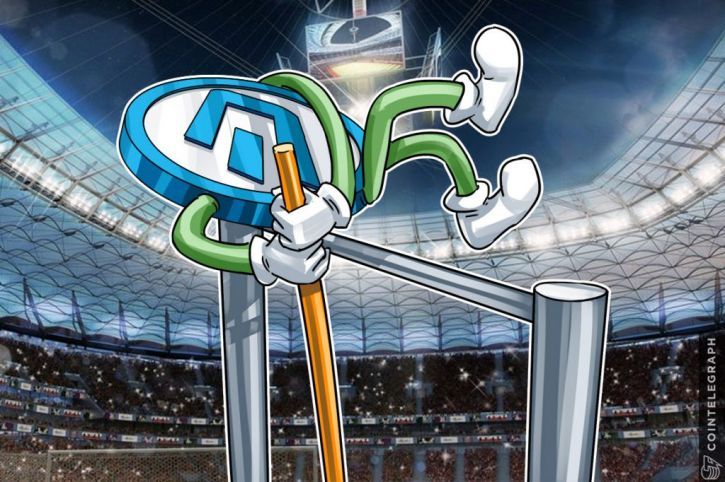This past weekend, Dash surpassed $1,000 for the first time, and today the digital currency reached - and passed - $1,500 per coin. The last few months have been particularly kind to Dash; after a two month period of consolidation, Dash began to rise rapidly in early November.
November 6 saw Dash lift off from a base of $274; just six weeks later, the currency reached a high of $1,570 today. Dash began 2017 at a price of only $11.26, bringing about 139-fold gains so far this year.
Software update and bigger blocks
On November 8, Dash released its anticipated software upgrade - Dash 12.2. The new version of Dash included a number of fixes, code to increase the blocksize to 2 MB and other changes that will be needed for the project’s major Evolution release in 2018. Core developer UdjinM6 wrote of the 12.2 update:
The most notable changes are:
- DIP0001 implementation (which is a 2MB block upgrade);
- Transaction fee reduction 10x (activates via DIP0001 activation);
- InstantSend vulnerability fix (activates via DIP0001 lock in);
- PrivateSend improvement which should allow user to have mixed funds available much faster;
- Various RPC changes;
- Lots of backports from Bitcoin Core and refactoring of our own legacy code which should improve performance and make code more reliable and easier to review;
- Experimental HD wallet with BIP39/BIP44 support.
The update also introduced the code for bigger blocks which had already been approved by a vote of masternode owners in 2016. Dash’s blocksize increase activated a month later, on December 5.
The obvious question to ask is “why?” Even in the current manic market, a 575% gain in six weeks is significant. There are a few possibilities for Dash’s sudden and rapid rise: big blocks, integrations and Dash Evolution.
Bigger blocks and Bitcoin Cash
A sizeable minority of the Bitcoin community supported scaling on-chain through the use of bigger blocks. While most of them migrated to Bitcoin Cash following the cancellation of SegWit2x, some big blockers may have hedged their bets by purchasing Dash. Bitcoin Cash has performed far better than most people ever expected, surpassing $4,000 today following Coinbase’s addition of the currency.
It’s possible that Dash is benefiting from the renewed attention on Bitcoin Cash, and by extension, on-chain scaling and bigger blocks. Dash’s 2 MB upgrade was just a start, with 5 MB blocks planned for the not-too-distant-future. Eventually, Dash plans to increase its blocksize to hundreds of megabytes.
Cofounder Evan Duffield points out that because masternodes earn 45% of the block reward owners of these nodes will be able to upgrade to custom hardware housed in high-speed colocation centers. At $1,500 per Dash, masternode owners currently earn $10,500 per month, per masternode.
Increasing integrations
As Cointelegraph covered in detail earlier, Dash has announced a number of integrations and partnerships this year. The currency has partnered with Alt36 to integrate Dash payments into a point-of-sale system for the legal marijuana industry. Dash has also been added to several high-profile exchanges, including Kraken, Bitfinex, Huobi and others. Arizona State University has partnered with Dash to start a Blockchain Research Lab to look into key questions such as mining decentralization. Dash has also integrated with several multi-currency crypto debit cards, allowing owners of the currency to use it at 40 mln retailers worldwide.
At Dash Conference 2017, Dash Core CEO Ryan Taylor hinted at more to come, including:
- Global brokerage service with free bank transfers
- New exchange integrations
- Dash will have access to 20 new fiat currencies
- An additional ATM manufacturer
- Integration with several large retailers
- A healthcare integration
Dash Evolution
Dash’s developers have been working on a major upgrade for over a year, and updates like 12.2 (and 12.1 that came earlier this year) are laying the foundation. Dash’s team wants to make cryptocurrency so easy “even your grandmother can do it.” They argue that digital currencies are too difficult to buy, to store, to transfer, to sell and to use.
Taylor writes:
“Think of Evolution as online payments, a system similar to PayPal or Venmo, but completely decentralized, so that a user is always in control of his or her own money.”
Dash Evolution will be a massive undertaking and it remains to be seen whether the team can truly replicate the ease and convenience of PayPal in a decentralized form. If they do manage to simplify the famously complicated cryptocurrency world to that extent, the price will almost certainly skyrocket. Investors may be seeing Dash’s recent development work as promising for 2018’s planned release of Evolution and buying the currency in expectation of gains.
Follow the money
Then again, maybe the answer is even simpler: Dash has a gargantuan monthly budget. The network reserves 10% of the block reward each month for projects which are approved by the masternode owners. There are no restrictions on what proposals qualify - they just have to advance the ecosystem in some way. At present prices, Dash’s annual budget is $124 mln per year.
Along with community-submitted proposals, Dash’s development team is funded entirely from the monthly budget. With that much money, Dash can afford to hire dozens of the best developers in the industry. In fact, Dash presently has 50 paid team members earning a total of $300,000 per month. Other digital currencies, such as Ethereum, have large endowments, but none have such a large recurring source of revenue.
Bitcoin’s development is entirely funded through donations, so when a group of Bitcoin holders suggested a donation scheme to fund a Superbowl ad, Duffield couldn’t resist. He commented:
“Dash can afford this.”
According to Forbes, a 30-second Superbowl ad costs $5 mln. That’s half of Dash’s $10.3 mln monthly budget. Nobody could possibly predict whether further price increases are coming, but the effects of a $124 mln annual budget should not be underestimated.


